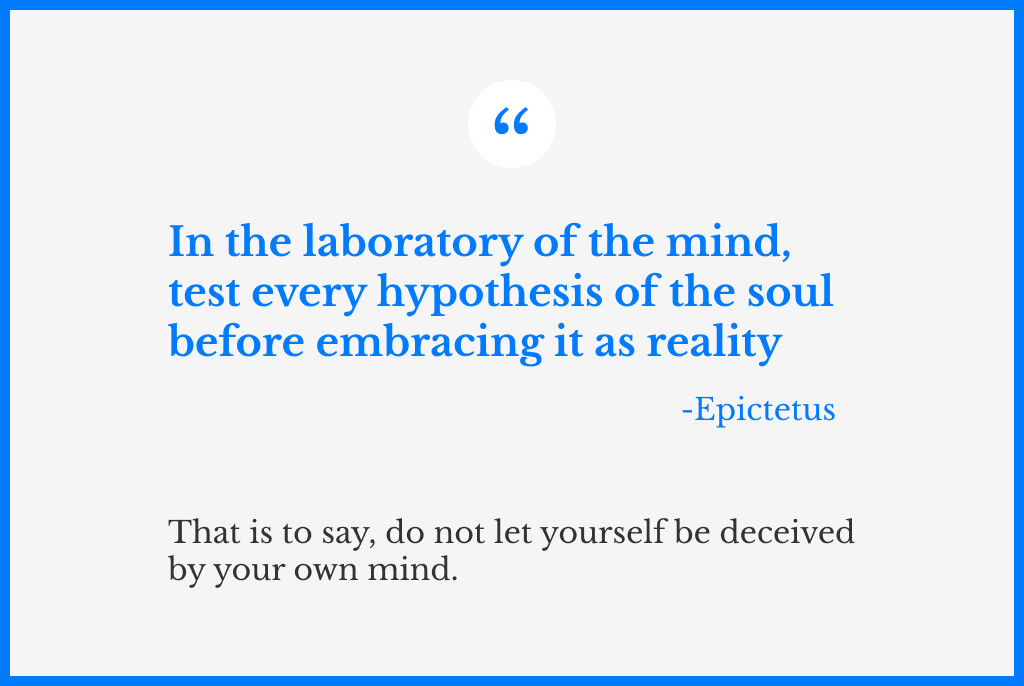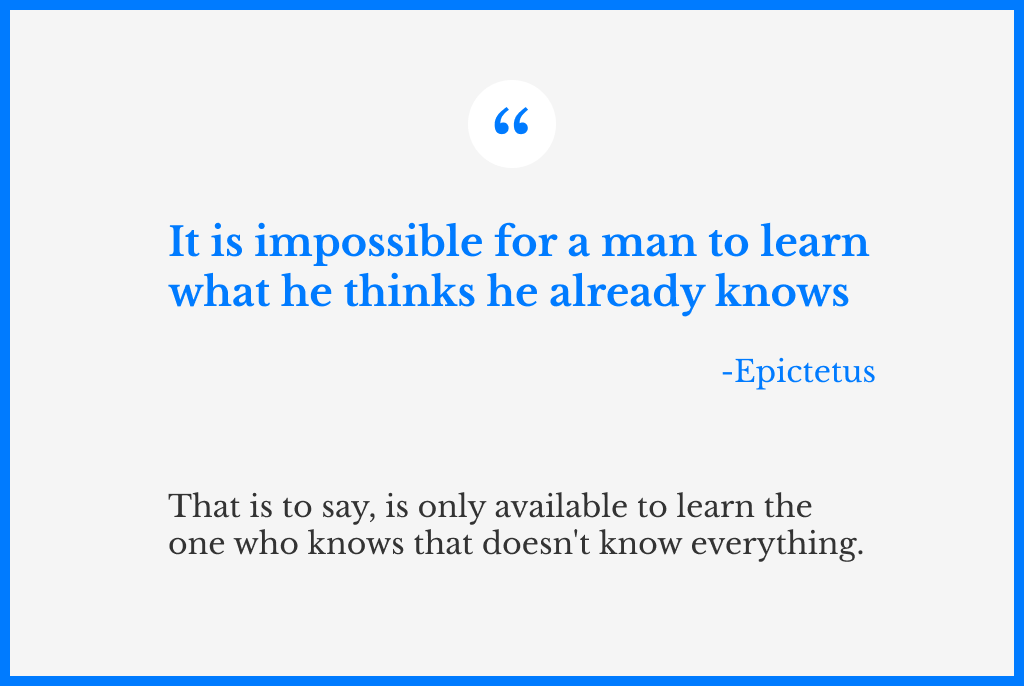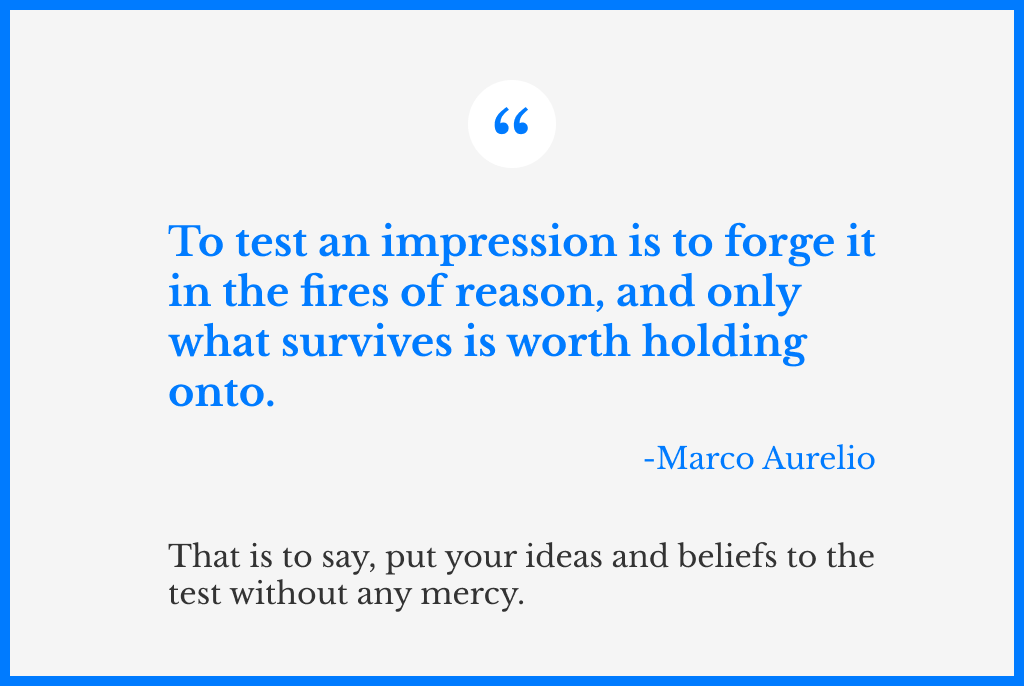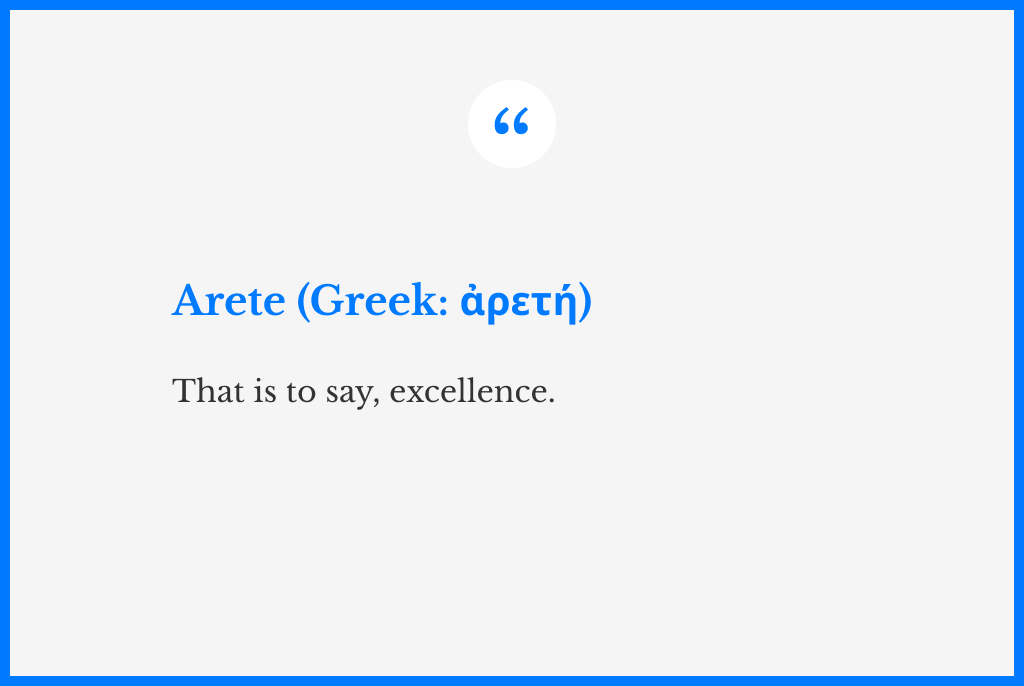A story of humility and love for knowledge.

What do philosophy, particularly Stoicism, have in common with UX? Quite a bit. In this article, the first in a series of three, I am committed to showcasing the interconnections between these two realms and demonstrating how UX professionals — whether you are a UX Researcher, Product Designer, or Content Designer — can draw inspiration from them.
But, first of all, a brief introduction to what Stoicism is not.
What Stoicism is not:
- Is not emotionless
- Is not about reading book or knowing quotes by heart
- It’s not elitist
So what the hell Stoicism is?
- Is a methodology for seeking practical wisdom in life
- Is about cultivate inner virtues such as wisdom, courage, and self-control
If you would like to know a bit more about Stoicism, I suggest watching this TED-Ed:
Having finished the introductions, let’s move forward to the main reason behind writing this article: the intersections between this philosophy school and UX Research.

The Stoics understand that our impressions and beliefs must be put to the test. It seems simple, right? Yet, it demands a significant capacity for critical examination and ego withdrawal.
Imagine spending weeks working on a user flow. It was hard work, and you are very happy to have completed a solution that seems quite good to you. You have full confidence in your work. Then, you are going to test your solution (your hypothesis) through user tests. You’re surprised to find that clients can’t use your solution as expected — they are facing some challenges, like adding a purchase to the cart or even understanding that title you thought was excellent.
It can be difficult to deal with this kind of information because it requires changing ideas and making decisions that can be painful (“goodbye, beautiful title👋”). This is where your humility and love for knowledge come into play.
That’s why:
- We shouldn’t assume that our hypotheses or thoughts represent the reality.
- We shouldn’t let ourselves be surprised. We should keep all scenarios open (according to the Stoics, only fools are surprised).
- We should know how to withdraw our ego from the analysis of results and abandon ideas of ‘my solution’ or ‘my work.’ Yes, it might be made by you and your team, but ultimately it belongs to the user.

Once again, Epictetus proves to be a skillful researcher. First, and for curiosity’s sake, let me just share that Epictetus is one of the strong names in Stoicism. He lived all his life as a slave and deeply reflected on the concept of freedom.
Reading tip: Who Is Epictetus? From Slave To World’s Most Sought After Philosopher (dailystoic.com)
But coming back to the quote. What does it mean? It means that if someone thinks they know something, it becomes impossible for them to learn. It is necessary to be open to learning, to have a honest desire to learn. And this leads me to a conclusion. It’s not enough to conduct user tests if, afterward, we are going to interpret the results through our own perspective. We must be blank slates, receptive and curious about what will emerge from the test.
That being said, how can we assure that our results are not biased? Listen to Marcus Aurelius.

To ensure that we are not biased by our impressions and personal beliefs, we need to “forge them in the fires of reason.” Invite rationality, humility, and impartiality to come in, open the doors of your mind, and replace those old dusty comments as “I like,” “I don’t like,” “I prefer” with options based on evidence.
From my experience, the first step to ensure that is to transcribe the user test, avoiding the “he said, she said.” Then, analyze the results together with a team that ideally should be composed of people of different ages, genders, and ethnicities. Avoid having people with more power in the room speaking first, as this could influence the opinions of more junior or less confident colleagues. Keep an open dialogue, laid-back environment, where multiple suggestions can emerge.
Lastly, view the improvement suggestions that can emerge not as final solutions, but, once again, as something that needs to be validated “in the fires of reason,” meaning by our users.
Some people may say, “my company doesn’t have the capacity to do all that“ or ‘it’s a very time-consuming task, and we have urgency“. Based on that, let me take a step back.

This is one of the most important concepts for Stoics. It’s considered “the ultimate expression of human greatness — moral, physical, spiritual“ — Daily Stoic.
And why am I finishing this article talking about excellence? Because UX Researchers were among the professionals most affected within the UX field by the layoffs. When everything seems to fail, arete has never been so important. Arete to re-enter the market or arete to maintain your position and arete to demonstrate the importance of research within a design team.
According to stoicism, arete is not a magic trick, even if the word may seem so for those, like me, who don’t speak Greek. It’s about being effective. And all of us who work in UX, especially in the fast-paced tech environment, know the importance of being effective.
It demands effort, method, and dedication.
Arete is frequently associated with bravery, but more often with effectiveness. The person of Arete is of the highest effectiveness; they use all their faculties (…)to achieve real results. — Classical Wisdom
In my opinion, one of the most effective ways to value the work of UX Researchers is through investing in good documentation: rigorous, systematic, and well-ordered. This occurs not through isolated gestures, but through continuous gestures that become habits.
Christine Soules, in her article ‘How to use UX documentation to collaborate effectively,’ mentions some of these gestures that seem so simple, yet so powerful, such as ‘mark dates for both creation and updates’ and ‘don’t forget to update with results,’ along with other recommendations worth reading.
Reading tips:
– How to use UX documentation to collaborate effectively
– Rigorous documentation: A research superpower
– Creating a UX Research System: Making your work understood as a researcher
One of the quotes that really captures all of this I’ve been writing is from the philosopher Will Durant. It could very well be a statement from Nike or a mantra for an elite athlete. But it’s here for every one of us. So, let’s hold onto this quote. In the small and giant tasks. In our personal and professional life. With the people who are close to us or those who simply pass by.
We are what we repeatedly do. Excellence, therefore, is not an act, but a habit — Will Durant
Key takeaways:
- Put your impressions to the test through critical examination and ego withdrawal.
- Be a blank slate, entirely receptive and curious about the results that can emerge from the user tests, even, and especially, when you don’t have the results that you would like.
- Promote rationality and impartiality in analyzing user test results.
- Pursue excellence as a habit that demands effort, method, and dedication.
References:
- Daily Stoic
- Classical Wisdom
- The philosophy of Stoicism
- Who Is Epictetus? From Slave To World’s Most Sought After Philosopher
- How to use UX documentation to collaborate effectively
- Rigorous documentation: A research superpower
- Creating a UX Research System: Making your work understood as a researcher
Moving around Stoicism and UX Research was originally published in UX Planet on Medium, where people are continuing the conversation by highlighting and responding to this story.